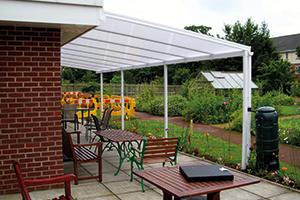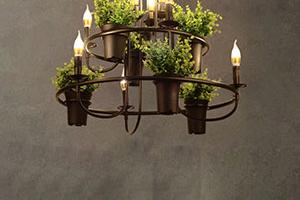With the summer in full swing and the recent pandemic situation, the need to spend time outdoors has never been so prevalent. We’ve therefore…
Sensory rooms: six mistakes care homes need to avoid
Most care professionals are well aware of the benefits of sensory rooms – they are spaces which offer a calming, soothing environment or can trigger reactions and promote interactions, particularly important among residents with dementia.
They can be used for individual sessions or with a group of residents, and family members can even join in with activities too. But there have been too many instances where time and money has been spent on decorating, furnishing and equipping rooms which, usually after a flurry of activity for the first few months of opening, then lie largely unused.
Researchers have found that this is down to sessions which have not been effective or which may even have had the opposite of the desired effect – unsettling residents who are confused about where they are and why.
In this article, Care & Nursing Essentials explores the findings of a study by Anke Jakob, researcher in design at Kingston University, and Lesley Collier, now Reader in Occupational Therapy at Brunel University London.
They reported in ‘How to make a Sensory Room for people living with dementia – developing design guidance for health care practitioners’ that of the 16 care homes where provision was studied, many of the existing sensory rooms had been inadequately designed, with inappropriate provision and without effective staff facilitation.
We look at the common mistakes which have been made in setting up and managing this type of provision – and suggest how to fix the issues to make sensory rooms more effective…
1.Making the room too clinical
At the recent Mental Health and Dementia Facilities Forum, Dr Jakob said she had found during her research that some sensory rooms had been created in clinical-looking rooms and were heavily reliant on technology. Feedback the researchers received from care staff included comparing the sensory rooms to ‘spaceships’ or ‘discotheques’. Traditional furniture, muted, warm colours and a fireplace are preferable to create a homely atmosphere in which residents can relax feel more comfortable.
2. Offering the same types of stimulation
In the study, visual and tactile stimulation were well catered for, making up around 55% of all provision offered. Auditory and olfactory provision accounted for around 32% combined.
Meanwhile, taste and movement experiences only provided 5% and 8% of the provision respectively. Gustatory experiences and movement/positioning of the body are therefore areas which need to be thought about more carefully when planning sensory rooms, in order to offer a full and balanced experience.
3. Using products aimed at children
The researchers found that many of the technology-based sensory activities were not suitable or age-appropriate for elderly residents. This resulted in residents being disengaged and staff becoming less motivated to use the rooms as they could not see a response from residents.
4. Having too much stimulation
Clutter, too many lights and too much sensory stimulation overall are just not conducive to what is meant to be a focused environment.
The guide "How to make Sensory Room for people living with dementia" which was produced as a result of the study recommends: “To help maintain focus on an activity the space should not be filled or cluttered with too many sensory items and/or other objects that are likely to over-stimulate and distract attention.
People with dementia find it difficult to filter relevant stimulation when there is competing stimuli.”
5. Not catering for the interests of all residents
The stage of dementia a resident is in, their background and their personality are all important factors to consider when offering a sensory room. This person-centred approach (Regulation 9 of the CQC: Health and Social Care Act 2008 (Regulated Activities) Regulations 2014) is recommended in the guide, which recommends activities which are achievable for different groups and states: “The person setting up the room needs to remember that what relaxes one person may stimulate another. A person who is sensitive to stimulation is likely to respond quicker. By completing an in-depth personal life story, staff will be aware of what things stimulate or relax each resident.”
Sensory equipment or items should be based on that person’s interests and needs, and critically the outcomes from each sensory session should be recorded alongside what has been stimulating or relaxing so that other staff will know what to use and what to do next time.
6. Failing to train staff in using the rooms effectively
With a high number of staff and employee turnover being an issue in some care homes, training care workers on how to use the rooms is vital. This can be done in meetings, on the job with senior members of staff or via CDP training courses offered by external providers. Similarly, a visit to a nearby care facility which has an effective sensory room would be beneficial to share best practice.
To conclude, we would recommend taking a look at the free guide “How to make Sensory Room for people living with dementia” to ensure your sensory room is designed to be as effective as possible. There are examples of “before and after” room makeovers as well as advice on quick, budget fixes and how to find the suppliers you need to provide good-quality, effective equipment.
As long as staff are trained, have been timetabled to use the room and are keeping personalised records of each session, then your new and improved sensory room will soon become a vital part of your setting.
The guide book "How to make Sensory Room for people living with dementia", by Anke Jakob and Lesley Collier, is available as a PDF online at kingston.ac.uk/sensoryroom.
The article “Sensory enrichment for people living with dementia: increasing the benefits of multisensory environments in dementia care through design”, by Anke Jakob and Lesley Collier, is also available as a PDF online at





